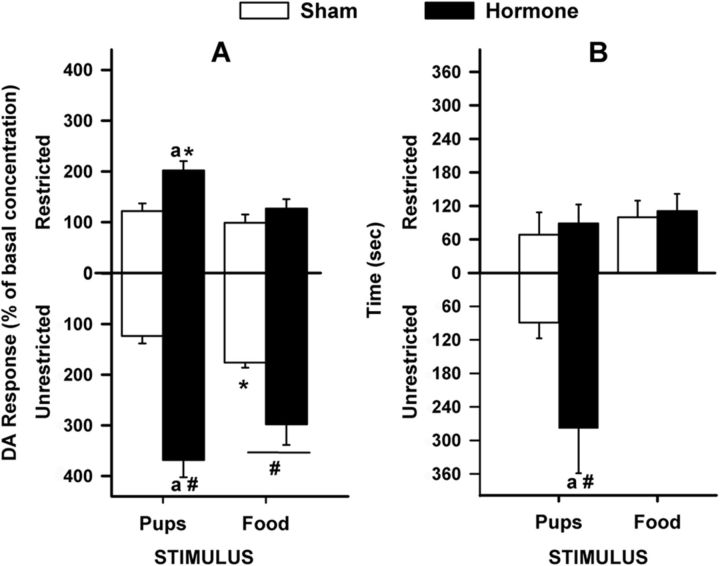Figure 5.
Treatment, stimulus, and access had selective effects on (A) DA that were unrelated to (B) behavior in the OVX female rat (Experiment 2). A, DA response data (mean ± SEM) represent average percentage of basal concentration. Hormone-treated females (n = 7) had increased pup-evoked DA compared with the sham group (n = 5), regardless of access type; however, this effect during unrestricted access was facilitated. During restriction, hormone-treated females had increased pup-evoked compared with food- evoked DA; and during the unrestricted phase, sham-treated females showed the reverse. Both treatment groups showed increased DA responses to unrestricted food compared with restricted access. B, Time spent (mean ± SEM) in behaviors directed toward each of the restricted stimuli and during unrestricted pup access. Among hormone-treated females, but not among sham controls, the time spent with unrestricted access to pups was significantly greater than the time spent with pups in the box. ap < 0.05, treatment difference for pup stimuli during a given access. #p < 0.05, access difference for a given treatment and stimulus. *p < 0.05, stimulus difference for a given treatment and access.

